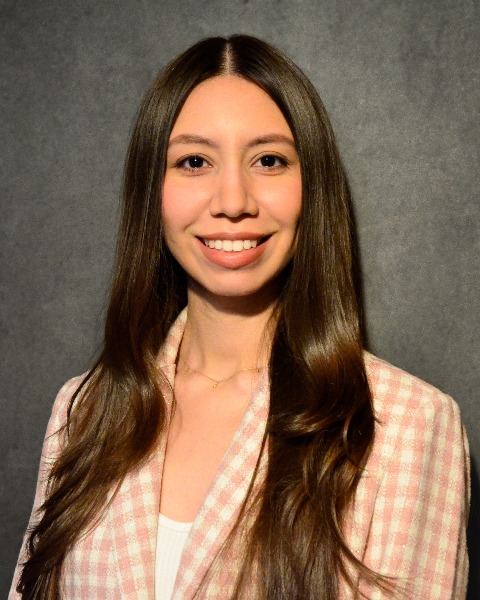Adult Diagnostic (AD)
PP1613 - Speech Recognition in Quiet and Noise on Spanish-English Bilinguals using the AzBio Sentence Test

Karina Romero, BS (she/her/hers)
Doctoral Candidate
California State University Los Angeles
Los Angeles, CaliforniaFinancial Disclosures: I do not have any relevant financial relationships with anything to disclose.
Non-Financial Disclosures: I do not have any relevant non-financial relationships with anything to disclose.- MH
Miwako Hisagi, AuD, PhD (she/her/hers)
Assistant Professor
California State University, Los Angeles
California State University, Los Angeles
Los Angeles, CaliforniaFinancial Disclosures: I do not have any relevant financial relationships with anything to disclose.
Non-Financial Disclosures: I do not have any relevant non-financial relationships with anything to disclose. - MW
Margaret Winter (she/her/hers)
Clinic Director
California State University Los Angeles
Redlands, CaliforniaFinancial Disclosures: I do not have any relevant financial relationships with anything to disclose.
Non-Financial Disclosures: I do not have any relevant non-financial relationships with anything to disclose. - BB
Beatriz Barragan, PhD (she/her/hers)
Associate Professor
A.T. Still University
A.T. Still UniversityFinancial Disclosures: I do not have any relevant financial relationships with anything to disclose.
Non-Financial Disclosures: I do not have any relevant non-financial relationships with anything to disclose.
Lead Presenter(s)
Presenter(s)
Contributor(s)
Currently, there is a lack of validated tools in Spanish for the clinical audiometric evaluation of speech perception. This study evaluated speech recognition in English and Spanish using the AzBio Sentence Recognition tests to determine if there is a correlation between dominant language proficiency level and AzBio performance. It appears that using English word lists alone does not accurately evaluate the speech perception of primarily Spanish-speaking bilinguals.
Summary:
The Spanish-speaking population in the United States continues to grow. According to the most recent US Census, about 41 million people in the United States aged five years or older speak Spanish at home. As the number of Spanish-speaking individuals and bilingual individuals grows, there is an expectation that audiologists should have the tools needed to work with this growing population. Few validated tools exist in Spanish for the clinical evaluation of speech perception. The AzBio Sentence Test was originally developed and validated with adult cochlear implant users. The Spanish AzBio Sentence Corpus was recently developed to help assess native Spanish speakers in both research and clinical settings (Rivas et al., 2020). Therefore, further studies are needed to show that Spanish speech perception materials are vital in providing linguistically competent care for this growing bilingual population.
This study aims to answer the following research questions: Is there a significant difference between the Spanish AzBio sentence test scores and the English AzBio sentence test scores in quiet and in noise for adult Spanish-English bilingual listeners based on their language dominance? Is using English speech perception tests with stronger Spanish bilinguals less accurate than using dedicated Spanish testing materials?
The control group includes monolingual English listeners with no strong second language experience. The target group is Spanish-English bilingual listeners who have acquired both languages at various ages. All participants are aged 18 and over with normal pure tone thresholds (< 25 dB HL for the frequencies 0.25 to 8.0kHz).
The Spanish and English AzBio sentence tests in quiet and noise are used to assess speech recognition performance. The recorded speech includes multiple male and female talkers using a conversational speaking style. There is a 10-talker noise on the opposite channel of each track and limited contextual cues. The final score is a percentage of correctly identified words and sentences for each list. Two lists per condition were played in the presence of a 10-talker babble at a +5dB signal-to-noise ratio. In addition, the English Northwestern University Auditory Test Number 6 (NU-6) and the Spanish Auditory Speech List were used for comparison.
Preliminary results from this study show that bilingual listeners have better scores in the Spanish AzBio test condition than in the English AzBio test condition. Specifically, bilingual listeners who self-rated better proficiency in Spanish than in English scored better in the Spanish AzBio test condition. In addition, bilingual listeners who self-rate Spanish as their dominant language have more difficulty under the English AzBio test noise condition.
Learning Objectives:
- Upon completion, participants will be able to describe the importance of using linguistically competent materials for a growing bilingual population.
